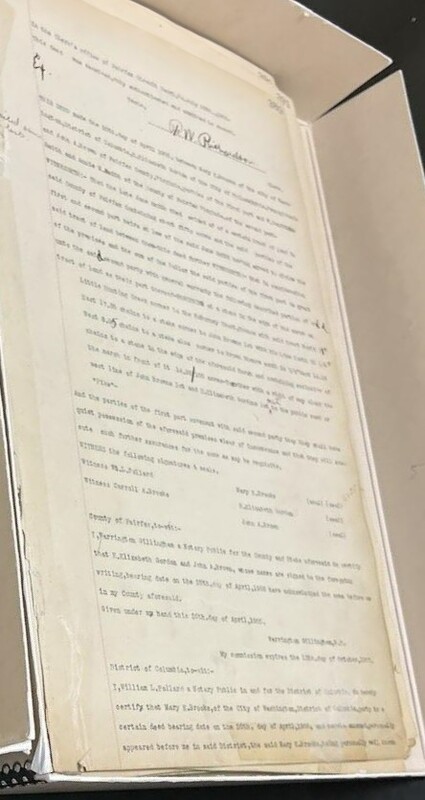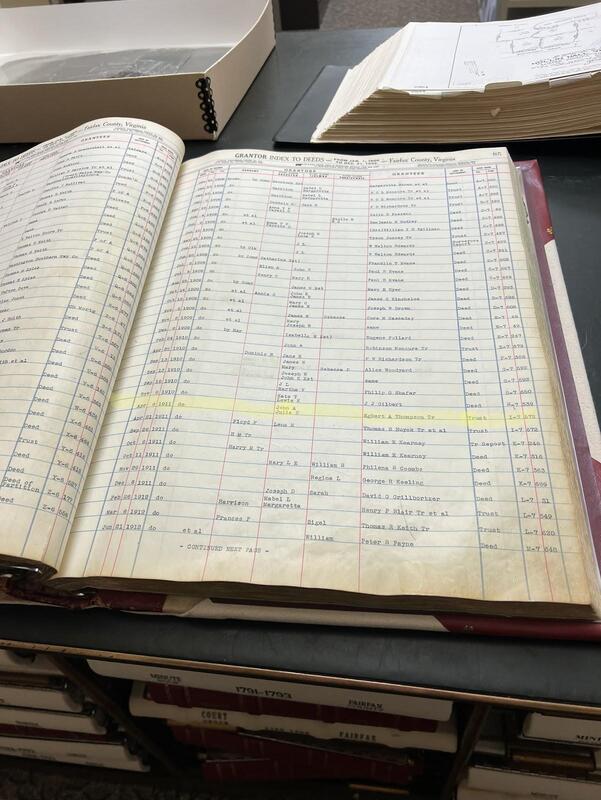John's Land and Gum Spring History
Despite John living in Tazewell most of his life, he bought land from Gum Spring in Fairfax, VA after his trip to Richmond. The deed states that it was 1.366 acres with the transaction happening on April 6, 1911, from Robert A. Thompson through a trust (a mortgage). Although the buying and selling price seemed to not be shown, numerous people appeared to sign the document in agreement to allow John’s purchase of the land, including William Dandridge Smith, Annie M. Smith, Mary E. Brooks, and John Brown. In addition, Mary E. Brooks and Elizabeth E. Gordon signed as witnesses in the document relating to witnessing. The land was assumed to be sold after 1921 as the last deed recorded in the tax books was from this year. From this info, it is thought that the land was bought and used during his trip to West Virginia, as he likely went to both West Virginia and the Gum Spring land during this time using trains, which was also how he was able to go to far places like Richmond. There is no information behind the reason he goes to West Virginia, but it can be assumed that he has family members or relatives there that he visits every so often. The concrete purpose behind the use of the purchased Gum Spring land is presumably for living and farming, yet the exact purpose of getting it for Gum Spring rather than other places is not known.
Gum Spring History
Gum Spring was founded in 1833 by West Ford, a freed slave who bought 214 of farm land by George Washington’s sister-in-law, Hannah Washington. In 1866, West Ford became the second richest free black farmer in Fairfax County, where this farmland transformed into an epicenter of the African-American community in the area. Before industrialization, Gum Spring was known as a staple area for farming and free, fertile land.





